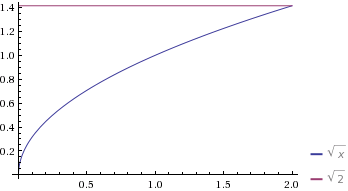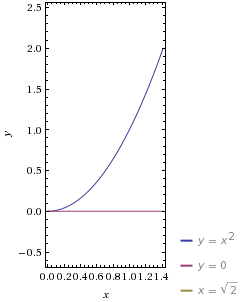How do you use the shell method to set up and evaluate the integral that gives the volume of the solid generated by revolving the plane region #x=y^2#, #y=0#, and #y=sqr2# rotated about the x axis?
1 Answer
It's unclear what your solid is, but the only one that makes sense is
You only need the positive one since

Since the shell method implies you are rotating about the y-axis (which is inconvenient for the regular revolution method), we can rewrite this for that.
Now we really just have

The shell method is:
where:

